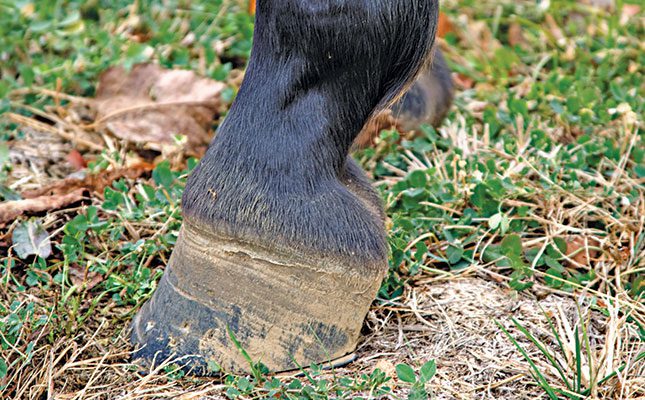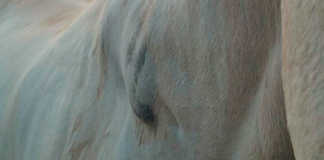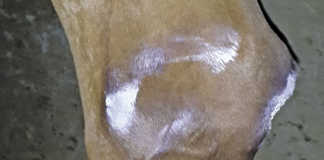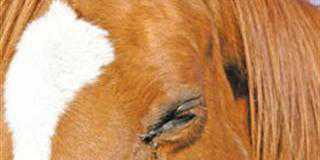
Photo: Wikimedia Commons
A recent scientific paper suggests a link between the conformation of the hind hooves and problems with balance and muscular conformation, which can compromise performance and soundness in horses.
It’s all in the angles
The correct conformation of a horse is well known to many horse owners and those interested in all things equine.
A horse’s body is divided into three equal parts, namely head, shoulders and forelimb; mid-piece and back; and hindquarters.
The length of the neck should be about one-third of the total body length and equal to the length of the front limb.
From the front, there should be a straight line from the point of the shoulder to mid-hoof. Viewed from behind, the line goes from the point of the buttock, through the hock, to mid-hoof.
Hoof angles are calculated by measuring the slope of a hoof as seen from the side. Front hooves are more upright (about 50°), while hind hooves are slightly more sloped (about 52°).
Hind hoof angles can vary, however, according to breed and discipline. In reining horses, the angle is deliberately more sloped to allow the hoof to slide when stopping. In carthorses, where the drive comes from behind, the hind hoof is more upright. The slope is also directly linked to the slope of the pastern. To increase speed, racehorses tend to have longer, more sloped pasterns and this, in turn, affects hoof angle.
Horses for courses
Most riders know that hoof length, angle and balance are linked to soundness. However, the type and cost of attention to a horse’s hooves depends on the breed and the type of work expected.
For example, few Basotho ponies are shod, as they are small horses with iron-hard hooves, selected for riding long distances over hard rocks in high mountains. Racehorses, in contrast, are bred for speed, not hoof hardness. This means that the hooves need to be trimmed and shod every six weeks so that these horses are sound enough to race.
Fresh focus on the hind hooves
The published literature on hoof conformation and soundness has focused mainly on an the equine forelimb. This is because the front legs carry a higher proportion of the weight, so hoof pathology is more likely here. However, recently published research suggests that the angle of the hind hooves can have a previously unrecognised knock-on effect on conformation and soundness.
The study suggests that the hoof, as well as being a weight-bearing structure, also functions as a neurosensory organ and influences balance, posture and soundness.
According to the authors, a sloped hind hoof has a “negative plantar angle” and the horse stands with a “canted-in” posture when seen from the side.
The horses in this study had an average hind-hoof angle of 81°, resulting in a serious long-term effect on their spinal column, posture, movement and musculature. It compromised the internal and external structures of the hind hooves, and remedial farriery was complicated.
To avoid long-term effects on soundness and health, early intervention was essential, say the researchers.
Source: www.mdpi.com
Dr Mac is an academic, a practising equine veterinarian and a stud owner.













